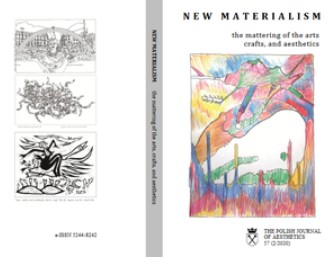Behaving, Mattering, and Habits Called Aesthetics - Part 1: Theoretical Navigation
Behaving, Mattering, and Habits Called Aesthetics - Part 1: Theoretical Navigation
Author(s): Adrian MrózSubject(s): Music, Aesthetics, Behaviorism
Published by: Wydawnictwo Uniwersytetu Jagiellońskiego
Keywords: Behavior; New Materialism; Art; Aesthetics; Behavioral Aesthetics; Habits; Music;
Summary/Abstract: In this two-part article, I propose a new materialist understanding of behavior. The term “mattering” in the title refers to sense-making behavior that matters, that is, to significant habits and materialized behaviors. By significant habits I mean protocols, practices and routines that generate ways of reading material signs and fixed accounts of movement. I advance a notion of behaving that stresses its materiality and sensory shaping, and I provide select examples from music. I note that current definitions of behavior do not capture its material dimension. This is because behavioral science has mostly viewed matter as passive, and not as an active agency. Such an approach has metaphysically framed behavior as a phenomenon of presence that is external from its environment. The approach of behavioral science to matter where there are fixed borders between the internal and external is lacking, since it does not account for agential cuts as conceptualized by Karen Barad. Instead, I consider behavior performatively; as an ongoing iterative practice and as integral to the growth of immanently self-caused matter that spawns metastable relational formations that produce different possibilities for successive formations. In this regard, behavior matters, and matter behaves. One key aspect of my article advances Bernard Stiegler as a critical new materialist thinker. This advancement concerns the technical doings of artworks, which include the material activity that is generative of sensitivity: feelings and beliefs associated with a sense or meaning. I outline an example of the materiality of habits as constitutive of music. After that, I coin the transformative doings of matter on the artist as a “caripulation,” which is a desired movement or motion that transforms the mover and the moved. Finally, I raise “pharmacological” considerations in terms of the Stieglerian aspects of organic and inorganic organized matter.
Journal: Estetyka i Krytyka
- Issue Year: 57/2020
- Issue No: 2
- Page Range: 57-75
- Page Count: 20
- Language: English

